The content of the article
A brown owl belongs to the order of owls, which are ranked as a family of common owls. The length of its body is 28 centimeters, and the width of the wingspan reaches 64 centimeters. The weight of an adult individual can reach 200 grams. This bird can not boast the beauty of its appearance, which is more known to the inhabitants of the southern regions.
The owl can be found practically throughout the central part of Europe. It became known that it is difficult to tolerate the low temperatures of severe winters, as a result of which the population of this species is significantly reduced. Therefore, for its habitat, the European climate is poorly suited.
During the flight, house owls energetic flaps of their wings alternate with stationary soaring, due to which their flight can take place along a wave-like trajectory. This bird has wide wings with rounded ends, due to this feature during the flight it seems that it increases in size.
House owls have a sufficiently strong body and strength, unusual for their modest size. A distinctive feature of these birds is a large head, on which are two large, very expressive yellow eyes. Ears characteristic of the remaining owls they are missing. The coloring of the male does not differ from that of the female.
Habitats
The little owl does not attract wooded areas, it clearly prefers open spaces with single trees that can be used as observation points. Birds of this species can easily settle in villages and urban-type settlements, giving preference to abandoned buildings and all sorts of ruins. And in the southern regions of these birds attract palm groves. They are rightly considered the indigenous inhabitants of the plains, which can not be found in the highlands.
The favorite places from which the little owl prefers to conduct his observation are single willows, especially if they have sawn tops. In addition, the bird can use high fencing as observation points,power lines and various poles. She can observe for long hours, keeping a fixed posture and studying the surrounding territory. When danger approaches, the owl immediately leaves its observation point and flies away.
Habits
If during the observation the owl managed to find something unusual for him, he is able to demonstrate a surprised look. For this, the bird makes funny nods with its head and moves its tail from top to bottom. It is curious that these birds always prefer to stay in pairs even if they ate the period of breeding the offspring is over.
They are not against close proximity from their relatives, they are able to nest about 20 pairs of this species of birds on the 1st square square kilometer. Although, going out to hunt, the owl periodically beeps, informing the others that this area is occupied.It is impossible to find a little owl in the mountainous regions, this bird also avoids coniferous forests, and every year they become less and less in the territories of agricultural activity.
It is noteworthy that this bird prefers to sing in the rain, most often the sounds of their singing can be heard in the spring. One of the characteristic features of the owl is the ability to hunt in the daytime, so it can easily be found during the day. In order to eat its prey, the bird tries to choose the same place, where over time many remnants of past feasts accumulate.
Fact! These individuals are not afraid of the close proximity to a person, they can easily get settled in the attic of a private house or just in a straw mow.
Diet
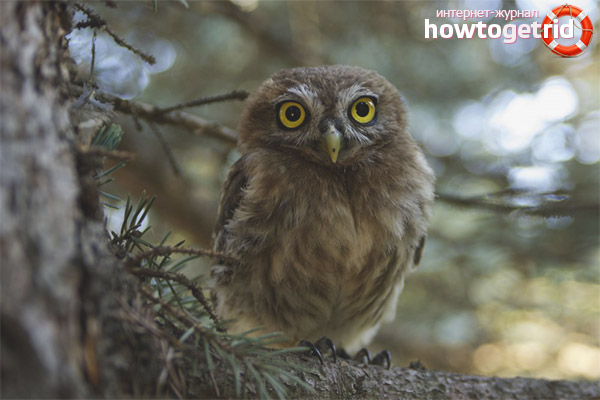
Even in the recent past, there was an opinion that the little owl eats only pheasants chicks. In fact, this bird prefers mostly mice or frogs, although it will not give up beetles or earthworms. In rare cases, small birds become prey of these owls, and sometimes they catch butterflies.
The most active period of hunting in this species of birds occurs in the evening twilight or in the early morning, although they are capable of hunting both at night and in the afternoon. In the daytime, the owl is capable of stalking small birds. He prefers to lead his hunt from ambush. Hiding in the place of his observation, he waits patiently, and when the prey is within reach, makes a silent attack, conducting an attack from above.
Being on the ground, the owl collects beetles in the grass or last year’s leaves, as well as earthworms. He moves perfectly on his strong legs and, if he manages to meet a frog or even a mouse, the owl is easily able to catch up with his victim. Some insects, this bird is able to grab on the fly, earthworms simply pulls out of the ground, just like thrushes do. In addition, the owl is able to ruin the nests of other birds. When the hunt turns out to be particularly successful, the owl tries to make supplies for the future, often using various insects attracted by the smell of carrion.
The period of breeding offspring
The beginning of the nesting period of this species of birds begins with the arrival of April andlasts until the beginning of July, this process reaches its maximum activity in the second half of May and the beginning of June. House owls create pairs that can not disintegrate for several years, although it is clear that the affection of these birds is not personal in nature, in fact they are attached only to their territory.
In the laying of the female there are from 3 to 5 eggs, the incubation period lasts up to 28 days. The male does not take part in incubation; he is busy with other concerns, he needs to feed his girlfriend sitting on the nest. Small chicks, having been born, have a robe made of thick white fluff, with time the white fluff turns gray. And only after that begin to grow feathers.
Feeding chicks is a matter for both parents, who are actively searching for food in this period. The first attempts to leave the nest the chicks make a month after the birth, but at this time they still need care. They succeed in finally becoming on the wing only after 5 weeks, after which they leave their parents.
Video: little owl (Athene noctua)

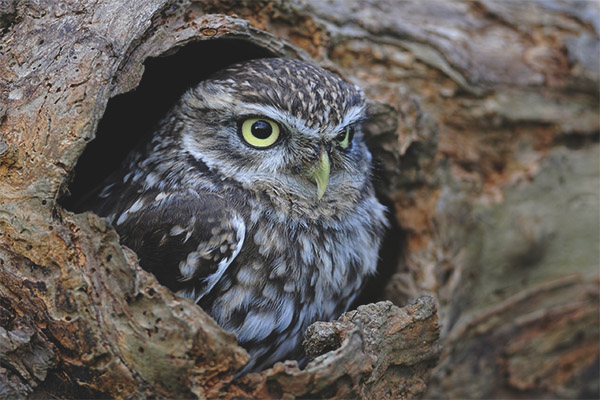
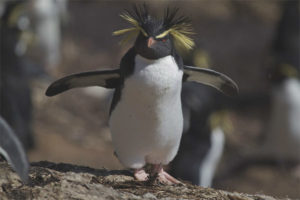
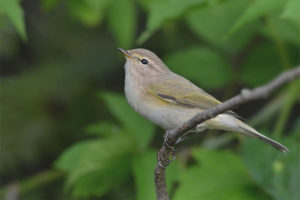
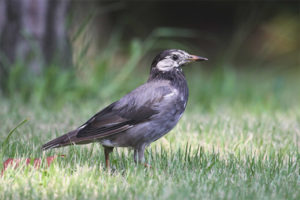
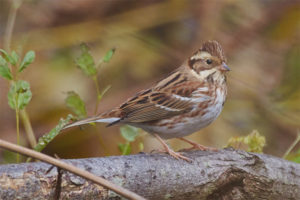
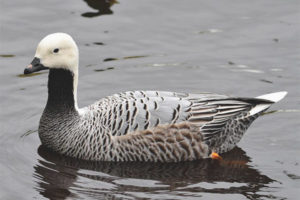
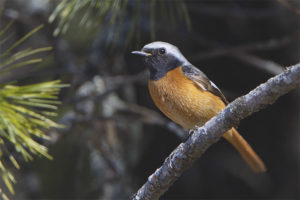
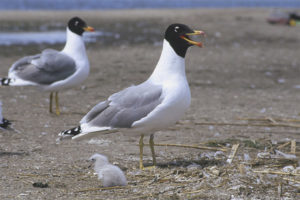
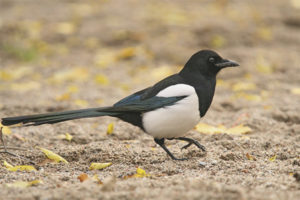
To send